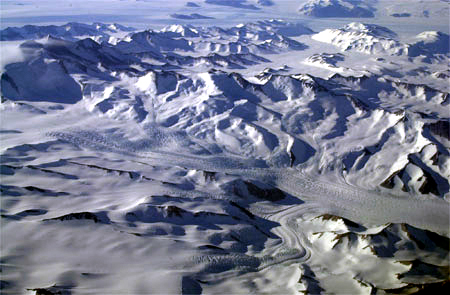|
IPY leads to accelerated level of discoveryThe most obvious payoff from the IPY will be the streams of new data that scientists will collect. “That will be mined for many, many years to come,” Borg notes. Without this intensified focus, he says, it might have taken more than a decade to accomplish some of the goals that international teams will complete in just a few years. “They might not ever have been produced … if we hadn’t sent a real strong signal to the community that we wanted to see a much higher level of international collaboration,” Borg says. While the IPY has hardly begun, it’s not too early to start talking about legacies and what may come after, according to Fountain. “People are already starting to think of post-IPY efforts because … by the time you gear up for post-IPY, it is post-IPY, and you don’t want to lose momentum in what’s being built,” he says. IPY may have set in motion a new paradigm that encourages international collaboration and more big-picture, thinking-outside-the-box science. “There’s certainly the opportunity to maintain the higher level of international collaboration, but it depends on the proposals,” Borg says. No one can predict whether funds will be available beyond IPY for the sort of ambitious projects now under way. However, the scientists say they hope the international bonds that they forge will last similar to those made in the IGY. “That generation bonded,” Priscu says. “It just set a new precedence for polar research.”
Sharing the costCollaboration isn’t only about fostering goodwill. It’s not cheap to work in Antarctica, given that it requires an operation that moves hundreds of people and countless tons of supplies around the world and back again.“Science is getting to the point where it’s getting more and more expensive,” Priscu says. “You have to collaborate, and you have to collaborate internationally.” The $30 million ANtarctic geological DRILLing (ANDRILL) project has ambitions beyond this year’s second straight field season. ANDRILL scientists have targeted several additional sites where they want to drill into the seafloor to extract sediments that will tell them more about the continent’s geological and glacial past. An effort between four nations, ANDRILL may not have existed without international cooperation. “We’re actively seeking the involvement of any other polar nation, any other Antarctic Treaty nation, that would like to buy into this effort and get a piece of the science that’s coming down the way later,” says David Harwood, ANDRILL principal investigator who is at McMurdo Station this season overseeing the research as the co-chief scientist. “It’s in the spirit of the Antarctic Treaty, certainly in the spirit of the International Polar Year, and it’s an expensive operation,” he adds. “Probably no single nation could do this effort, so the more folks that are involved, the more ability we’ll have to meet all the science goals and answer the questions we have as a community.”
Spreading the wordPublic awareness about the Antarctic and Arctic is an important goal for several reasons, not the least of which is helping people connect the dots between the poles, climate change and their own lives.More information “These regions at the end of the Earth are intimately connected with those of us who live in the temperate [regions],” Wagner says. “The IPY is going to put that right in the foreground.” Several dozen projects focus on just education and outreach. These two years may produce more documentaries, news stories and photographs of the poles than the last two decades. And many project teams now include teachers, who post blogs of their adventures for students back home and develop lesson plans based on their experiences. ANDRILL alone has invited a dozen educators to the Ice from its four member nations during the last two seasons. For Harwood, these 24 months represent an opportunity to encourage and inspire the next generation of polar researchers. “[We’re] trying to increase science literacy regarding polar issues into the schools because the youth that are participating in the activities and being aware of what we’re doing in polar research — those kids are going to be the ones that are going to be repairing the problems that we have given to them.” NSF-funded researchers in this story: Andrew Fountain, Portland State University; Robin Bell, Lamont-Doherty Earth Observatory of Columbia University; David Harwood, University of Nebraska-Lincoln; and John Priscu, Montana State University Bozeman. Back 1 2 |



For USAP Participants |
For The Public |
For Researchers and EducatorsContact UsU.S. National Science FoundationOffice of Polar Programs Geosciences Directorate 2415 Eisenhower Avenue, Suite W7100 Alexandria, VA 22314 Sign up for the NSF Office of Polar Programs newsletter and events. Feedback Form |


